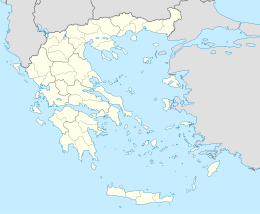Native name: Λέων | |
|---|---|
 The islet of Leon viewed from the fortifications on the islet of Souda within Souda bay | |
| Geography | |
| Coordinates | 35°29′27″N 24°09′02″E / 35.4908°N 24.1505°E |
| Archipelago | Cretan Islands |
| Administration | |
Greece | |
| Region | Crete |
| Regional unit | Chania |
| Demographics | |
| Population | 0 (2001) |
Leon (Greek: Λέων, "lion"), also known colloquially as Nisi ("the island") and during Venetian rule as Rabbit Island, is an islet in Souda Bay on the northwest coast of Crete.

On the southeast side of the islet, a small distance away, there is another larger islet called Souda. In ancient times these two islets were referred to as Leukai (Greek for "white ones") and pronounced "Lefkai". Their name came from the ancient Greek myth about a musical contest between the Sirens and the Muses. Out of their anguish from losing the competition, writes Stephanus of Byzantium, the Muses plucked their rivals' feathers from their wings; the Sirens turned white and fell into the sea at Aptera ("featherless") where they formed the islands in the bay that were called Lefkai.[1]
YouTube Encyclopedic
-
1/1Views:329
-
Kanchanaburi War Cemetary
Transcription
See also
References
- ^ Caroline M. Galt, "A marble fragment at Mount Holyoke College from the Cretan city of Aptera", Art and Archaeology 6 (1920:150).


